Does output change assist the role conversion, does Sony Dafa work?
Editor’s note: This article is from WeChat public account “Brain polar body” (ID: Unity007), author Tibetan fox.
With the growing atmosphere of Thanksgiving, in the face of 2019 with only the last month’s share, the endeavors and misses are all settled. It is time to usher in the winter and Tibetan season of inventory gains and losses and clearing of thoughts. .
Overall, the pace of AI’s industrialization in the past year is solid and full. When the old man in this county can talk to the smart assistant at home, if someone comes up and yells-we have to be AI! You might think that this company has either been offline for ten years, or it hasn’t caught up to the heat.
But if the other party is Sony, you still have to fight with Google and Facebook. Is n’t that a delicate taste? Hate it came too late, afraid that it was rubbed against the floor, and at the same time a little bit of anticipation-is it a long time to charge?
Whether AI can become the new “Sony Dafa” in 2020 is worth talking about.

Robot, robot, or robot: the word reads the new department Sony AI
Friends who follow technology news may have learned more or less the general details of Sony ’s new artificial intelligence department, including the establishment of offices around the world, a mission vision to make the world full of passion, and related team configuration and talent acquisition plans and many more.
If you want to explore a new way, you usually put people first. Otherwise, no one is available and nothing to do, and the innovation is naturally impossible to talk about. And Sony AI’s people and affairs, we have summarized it in one word, that is-robot.
Let ’s talk about staffing first. Sony AI will officially begin operations next month, and its global leader is Hiroaki Kitano, president and CEO of Sony Computer Science Laboratories (Inc.). The head of the U.S. website isPeter Stone is a professor of computer science at the University of Texas at Austin.
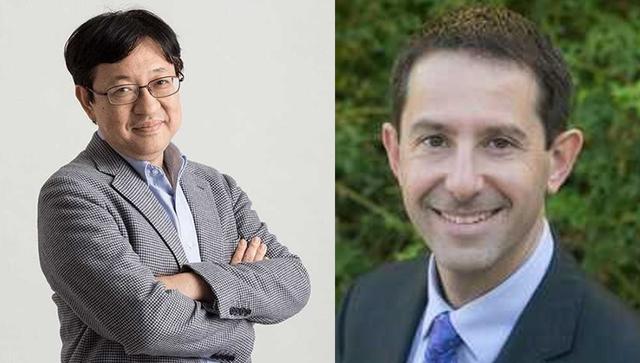
(Hirano Kitano and Peter Stone)
The direction of Sony AI basic research and development, as well as the recruitment of engineer talents, will be controlled by these two big futures. While their resumes are diversified, they also have core consistency.
Hongye Kitano is the former director of Sony CSL Labs. He has been engaged in research related to Sony’s core business since mid-1990s. Sony’s earliest artificial intelligence product, Aibo, was born in this laboratory. At the same time, Kitano is also the founding chairman of the RoboCup Federation. He hopes to develop a fully autonomous humanoid robot team and win the World Cup in 2050 as a goal to accelerate the progress of artificial intelligence and robotics.
And Peter Stone, a “sub-rudder” in the United States, is also a robot believer. His research has also focused on the areas of reinforcement learning and robotics, and has been widely used. He is also the deputy head and chair of the University of Texas Robotics Portfolio project, and serves as the current president of RoboCup. It is his interest to improve the basic capabilities of smart agents such as adaptability and interaction.
Obviously, these two researchers are not purely ivory tower professors. In addition to the basic problems, their research goals are also clear-that is, smarter and more widely used artificial intelligence robots.
This also sets the tone for Sony AI’s R & D projects.
Reports from overseas media show that Sony AI will have three core areas in the future: first, games, using AI to assist developers in design, testing, and analysis; and first, imaging and sensors, placing “Sony Dafa” in the hardware market The legend will continue for another second; finally, it is gourmet. Together with Carnegie Mellon University, we will develop a cooking robot equipped with artificial intelligence to achieve cooking, serving, and delivery.
To sum it up, carry out the public’s “stereotype” of Japanese AI to the end.
Leading and lagging: Reading Japanese AI from Sony
The conclusion that Japan has lost voice in the AI field is obviously biased. Japanese people and businesses have always been passionate about intelligence. Not to mention the distant fifth-generation computers, brain-like projects, etc., many well-known funds and investment in the field of AI todayAll Japanese-funded projects are led by Japanese companies, such as SoftBank’s Sun Zhengyi’s Vision Fund, and the 10 billion yen “Sony Innovation Fund” established in 2016. This year Sony and Yamato Securities jointly set up a focus The Innovation and Growth Fund (IGV) in the field of AI robots, etc., aims to raise 20 billion yen, and the investment target also covers Sony’s European and American bases.
Sony has also undergone several years of change, ending the era of Hiroi. In addition to capital deployment, at the product level, Sony has also resurrected the machine puppy Aibo, which has slashed the smart phone business that was unable to return to the sky. Even with the old rival Microsoft, they have released their suspicions and reached a strategic cooperation on cloud and AI technology. In 2018, Sony also collaborated with five Japanese taxi operators to develop an AI-based taxi system.
Compared to the lean cost management of Japanese companies, everyone may have no idea about this speed. However, on the global industrial scale, it is the “turtle speed” set off by peers.
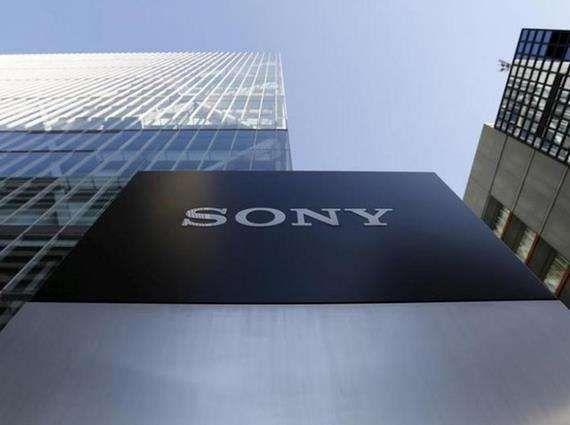
Take Facebook, the benchmark of Sony, as an example. In 2016, Zuckerberg announced a ten-year plan at the F8 annual developer conference, setting the tone for the AI strategy. The theme of the 2017 year that follows can be summarized by basic AI research. Facebook’s artificial intelligence research department (FAIR) was one of the organizations that made the most breakthroughs in the year. It is highly sought after by AI graduates. ; In 2018, basic research began to shift to production, and AI became the support for almost all Facebook products and services.
On the axis of the East, the speed at which Chinese technology giants have devoted themselves to AI can also be described as rapid. From 2015 and 2016, the strategic dependence of AI was successively proposed. China’s technology giants quickly laid out their ecology in an all-round way from basic research, open services, and industrial scenarios. Today, a three-dimensional and comprehensive industrial technology pattern has been formed.
Compared to this, Sony and even Japanese technology companies have tried their best, and it still seems that they have not set up a high-profile AI army. It took such a long time to launch an independent department dedicated to basic AI research, and many of the areas of technological excellence that were originally scattered are also being pursued and even surpassed.
For example, Sony plans to combine AI algorithms with games and spawn new business plans. Ubisoft started using Commit Ass in 2017Istant studies the combination of AI’s rendering, motion, and motion capture of traditional games. Its AI voice assistant named Sam is also available earlier than Sony’s PlayStation voice assistance system to help improve the gaming experience for players.
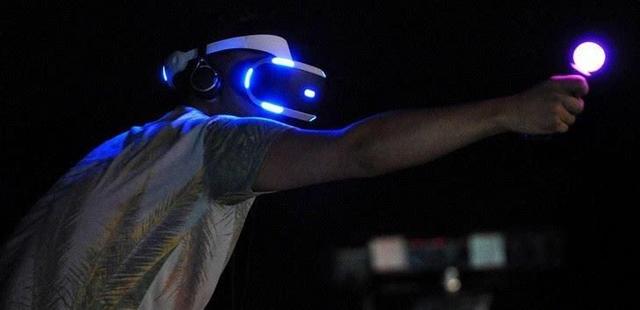
In the hardware consumer market where “Sony Dafa” occupies a strong brand advantage, Sony has also been slowing down one by one in segmented scenarios such as smart speakers and smart headphones.
Although Sony rarely bid farewell to its usual closed attitude and opened the API on the second-generation Aibo, encouraging many developers to create new applications on the robot dog platform, this has precipitated Sony technology for nearly 20 years Robot pets with the ability (the first generation of Aibo was launched in 1999) are more suitable for Japanese society where aging, solitary culture and bachelorism prevail. The meaning of emotional comfort is greater than the practical value of intelligent robot technology, which is difficult in the global consumer market Make waves.
Sony AI, and even Japan AI, want to enter the first camp of the global industry, its difficulty is not less than that of smart phones turning over. At present, it seems that Sony, who missed the mobile Internet, accidentally stepped on a similar pit in the AI rivers and lakes of “Changan Migui”.
Sony AI’s “counterattack” opportunity
From the mobile Internet to artificial intelligence, what we see is that this “giant elephant” slowly touches the life-saving straw again and again and again and again.
The chains that bind it may have three names:
One is “Lean Operations.” Compared to European and American companies’ strategic daring to be the first, Japanese companies are known for cost control and lean management. This also makes it pay more attention to practicality and commerciality in scientific and technological progress. As early as 1999, Sony began to deploy artificial intelligence. The full name of the robot dog Aibo is Artificial Intelligence Robot. This dog that can only roll can have caused a global sensation, but due to poor performance, Aibo announced the suspension of production in 2006. The same fate is Sony’s humanoid robot QRIO, which was discontinued due to sales just three years after its launch. A story like Deepmind’s three-year blood loss of 1 billion, and Google still “supporting”, is difficult to happen to Japanese companies.
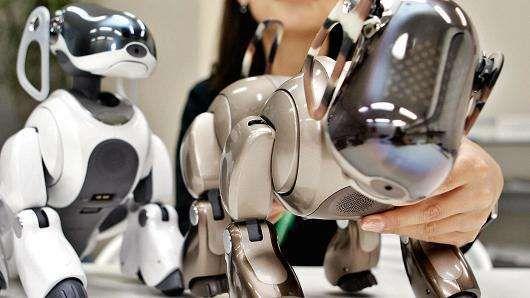
The second is “excessive lead.” Sony insists that it is by no means a rising star in the AI world, but because it has not been fully promoted, its true AI capabilities can be “sat on par” with Google and Facebook-to a large extent, its software and hardware on artificial intelligence robots Advantage.
Although its business intelligence robot products have successively launched the stage of history, Sony has not stopped research on artificial intelligence and robots. In 2016, Sony also invested in Cogital, a startup that develops artificial intelligence technology, to strengthen the technology of the next generation of smart products.
However, AI enters the real nodes of public life. It is the door of efficiency that is jointly opened by machine neural networks and big data. Even today, we are in the process of AI transformation in full swing. stage. And Sony’s proud high-intelligent robots truly provide diversified services for human beings, and also need to unlock a series of difficult technical chains. It is difficult to output real use value to the consumer market, which also makes it rely on AI to dream of saving losses, which can only be a question mark for a long time.
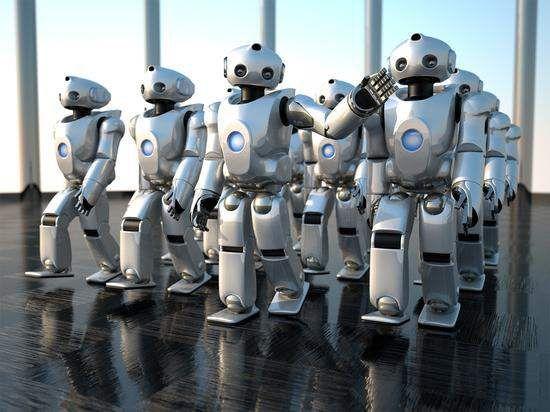
The third is “isolated development.” In terms of research and development, Sony’s attitude towards engineers is undoubtedly sincere. In order to snatch AI talents, Sony in 2019 provided newcomers with 7.3 million yen (about 460,000 yuan) after the first year of preferential treatment, an increase of 40% over the past. It also plans to expand the stock option (new stock subscription) incentive system, and the target of stock option is also included in the young people in the research and development department. At the same time, AI courses will be provided for engineers to keep the technology in sync with multiple departments.
However, the closed mechanism of Sony ’s internal isolation hill has made the AI strategy that should be open and collaborative, between the fragmented performance assessment and the division of the department, and exhausted creativity. For example, Sony ’s mobile phone camera sensors have been adopted by Apple, Samsung and other manufacturers, but Sony ’s CMOS has not strengthened its mobile phone ’s camera function because the camera department is worried about mobile phones.

The conclusion that Japan has lost voice in the AI field is obviously biased. Japanese people and businesses have always been passionate about intelligence. Not to mention the distant fifth-generation computers, brain-like projects, etc., many well-known funds and investment in the field of AI todayAll Japanese-funded projects are led by Japanese companies, such as SoftBank’s Sun Zhengyi’s Vision Fund, and the 10 billion yen “Sony Innovation Fund” established in 2016. This year Sony and Yamato Securities jointly set up a focus The Innovation and Growth Fund (IGV) in the field of AI robots, etc., aims to raise 20 billion yen, and the investment target also covers Sony’s European and American bases.
Sony has also undergone several years of change, ending the era of Hiroi. In addition to capital deployment, at the product level, Sony has also resurrected the machine puppy Aibo, which has slashed the smart phone business that was unable to return to the sky. Even with the old rival Microsoft, they have released their suspicions and reached a strategic cooperation on cloud and AI technology. In 2018, Sony also collaborated with five Japanese taxi operators to develop an AI-based taxi system.
Compared to the lean cost management of Japanese companies, everyone may have no idea about this speed. However, on the global industrial scale, it is the “turtle speed” set off by peers.

Take Facebook, the benchmark of Sony, as an example. In 2016, Zuckerberg announced a ten-year plan at the F8 annual developer conference, setting the tone for the AI strategy. The theme of the 2017 year that follows can be summarized by basic AI research. Facebook’s artificial intelligence research department (FAIR) was one of the organizations that made the most breakthroughs in the year. It is highly sought after by AI graduates. ; In 2018, basic research began to shift to production, and AI became the support for almost all Facebook products and services.
On the axis of the East, the speed at which Chinese technology giants have devoted themselves to AI can also be described as rapid. From 2015 and 2016, the strategic dependence of AI was successively proposed. China’s technology giants quickly laid out their ecology in an all-round way from basic research, open services, and industrial scenarios. Today, a three-dimensional and comprehensive industrial technology pattern has been formed.
Compared to this, Sony and even Japanese technology companies have tried their best, and it still seems that they have not set up a high-profile AI army. It took such a long time to launch an independent department dedicated to basic AI research, and many of the areas of technological excellence that were originally scattered are also being pursued and even surpassed.
For example, Sony plans to combine AI algorithms with games and spawn new business plans. Ubisoft started using Commit Ass in 2017Istant studies the combination of AI’s rendering, motion, and motion capture of traditional games. Its AI voice assistant named Sam is also available earlier than Sony’s PlayStation voice assistance system to help improve the gaming experience for players.

In the hardware consumer market where “Sony Dafa” occupies a strong brand advantage, Sony has also been slowing down one by one in segmented scenarios such as smart speakers and smart headphones.
Although Sony rarely bid farewell to its usual closed attitude and opened the API on the second-generation Aibo, encouraging many developers to create new applications on the robot dog platform, this has precipitated Sony technology for nearly 20 years Robot pets with the ability (the first generation of Aibo was launched in 1999) are more suitable for Japanese society where aging, solitary culture and bachelorism prevail. The meaning of emotional comfort is greater than the practical value of intelligent robot technology, which is difficult in the global consumer market Make waves.
Sony AI, and even Japan AI, want to enter the first camp of the global industry, its difficulty is not less than that of smart phones turning over. At present, it seems that Sony, who missed the mobile Internet, accidentally stepped on a similar pit in the AI rivers and lakes of “Changan Migui”.
Sony AI’s “counterattack” opportunity
From the mobile Internet to artificial intelligence, what we see is that this “giant elephant” slowly touches the life-saving straw again and again and again and again.
The chains that bind it may have three names:
One is “Lean Operations.” Compared to European and American companies’ strategic daring to be the first, Japanese companies are known for cost control and lean management. This also makes it pay more attention to practicality and commerciality in scientific and technological progress. As early as 1999, Sony began to deploy artificial intelligence. The full name of the robot dog Aibo is Artificial Intelligence Robot. This dog that can only roll can have caused a global sensation, but due to poor performance, Aibo announced the suspension of production in 2006. The same fate is Sony’s humanoid robot QRIO, which was discontinued due to sales just three years after its launch. A story like Deepmind’s three-year blood loss of 1 billion, and Google still “supporting”, is difficult to happen to Japanese companies.

The second is “excessive lead.” Sony insists that it is by no means a rising star in the AI world, but because it has not been fully promoted, its true AI capabilities can be “sat on par” with Google and Facebook-to a large extent, its software and hardware on artificial intelligence robots Advantage.
Although its business intelligence robot products have successively launched the stage of history, Sony has not stopped research on artificial intelligence and robots. In 2016, Sony also invested in Cogital, a startup that develops artificial intelligence technology, to strengthen the technology of the next generation of smart products.
However, AI enters the real nodes of public life. It is the door of efficiency that is jointly opened by machine neural networks and big data. Even today, we are in the process of AI transformation in full swing. stage. And Sony’s proud high-intelligent robots truly provide diversified services for human beings, and also need to unlock a series of difficult technical chains. It is difficult to output real use value to the consumer market, which also makes it rely on AI to dream of saving losses, which can only be a question mark for a long time.

The third is “isolated development.” In terms of research and development, Sony’s attitude towards engineers is undoubtedly sincere. In order to snatch AI talents, Sony in 2019 provided newcomers with 7.3 million yen (about 460,000 yuan) after the first year of preferential treatment, an increase of 40% over the past. It also plans to expand the stock option (new stock subscription) incentive system, and the target of stock option is also included in the young people in the research and development department. At the same time, AI courses will be provided for engineers to keep the technology in sync with multiple departments.
However, the closed mechanism of Sony ’s internal isolation hill has made the AI strategy that should be open and collaborative, between the fragmented performance assessment and the division of the department, and exhausted creativity. For example, Sony ’s mobile phone camera sensors have been adopted by Apple, Samsung and other manufacturers, but Sony ’s CMOS has not strengthened its mobile phone ’s camera function because the camera department is worried about mobile phones.

